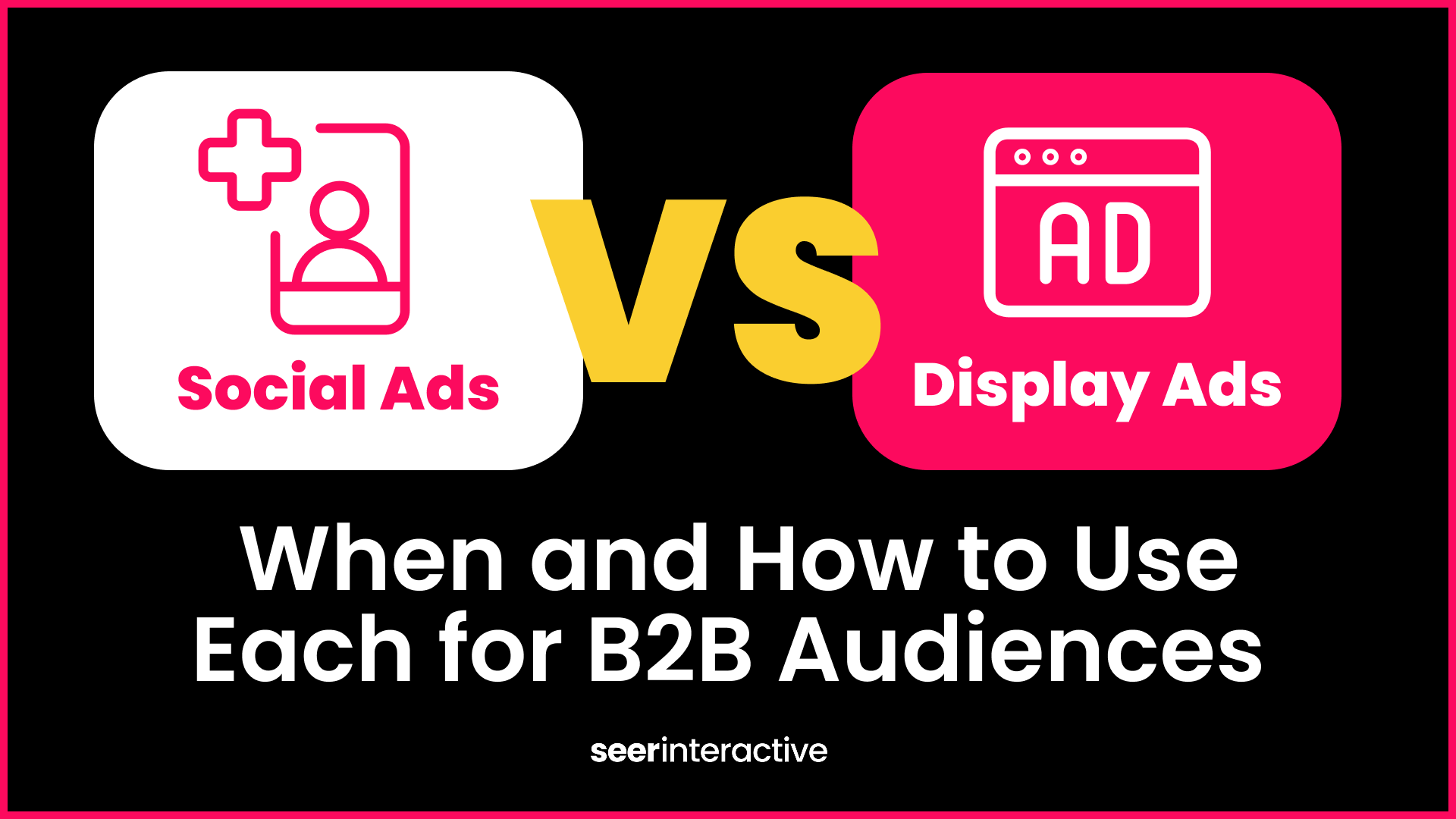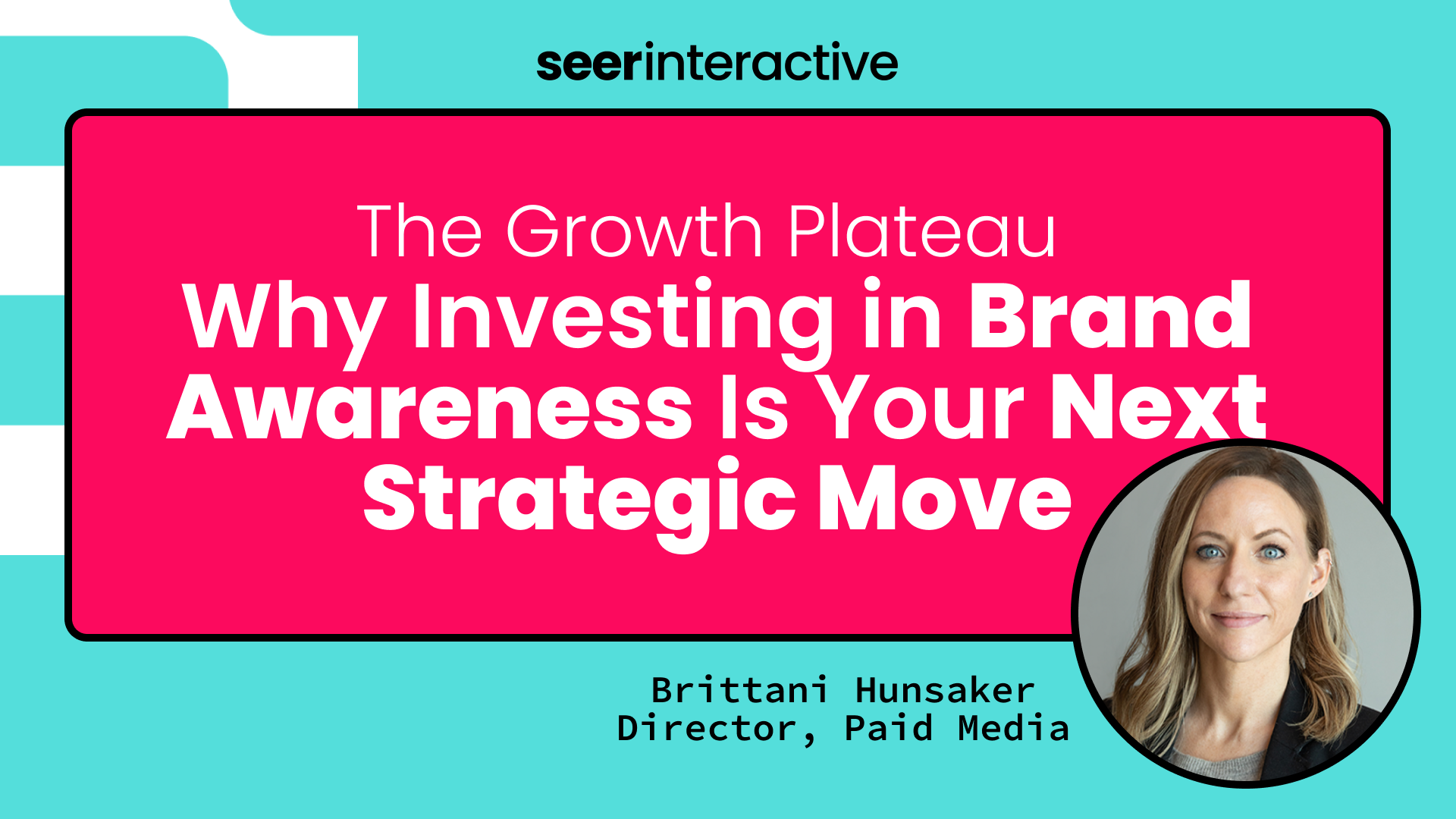What is the benefit of your client investing in both paid media and SEO services? When these teams work together, they can produce data-driven insights, ideate streamlined recommendations, and make bigger impacts on our client’s bottom lines. In the past, SEO has been viewed as a ‘marathon’ and PPC & paid social as “sprints.” If your teams work in silos with this outdated mindsight, it’s time to change that. If you’re an SEO, paid media is one of your most valuable tools. If you work in paid media, it’s time for you to utilize your SEO team. If you enjoy this post check out 10 more ways to make your data from PPC campaigns & SEO work together.
1. Approaching Keyword Research
Across SEO and PPC campaigns, you’re essentially performing the same research - identifying search terms that people are using to find your site. It’s time to collaborate on keyword research.
Uncover Top Performers
Identify top-performing keywords across PPC campaigns and organic pages to streamline your research.
If you’re an SEO, you’re going to want to take a look at your client’s paid Search Query Report (SQR). This report is under “Keywords” in Google Ads and provides the exact search terms that users searched for before they clicked on PPC ads. You’ll want to look at at least a year’s worth of data and utilize search term and campaign filters to narrow your search. Collaborate with your PPC team to understand the conversion volume of a typical campaign and use this information to identify top-performing search terms to target with SEO efforts.

If you’re a PPC, you’ll want to utilize Google Search Console. Select the account you’re looking at, then take a look at the “Search Results” report under “Performance.” Analyze queries by filtering by relevant pages, head terms, etc. You’ll also want to take a look at at least one year of data, but note that you won't be able to see data going back more than 16 months. Talk with your SEO team to understand typical click volume for a given page and/or query, then identify priority queries by click volume to target as PPC keywords.

2. Dominating Search Results and Competitive Landscapes
Identify your competitive search results across SEO & PPC campaigns. Where can your client pay to rank but cannot rank organically? Where are your organic pages already killing it, and where can your client pull back and save paid search budget?
When sites rank for both paid and organic search results for a given query, combined click-through rates skyrocket. Why? Because you’re taking up more SERP real estate. But in some situations, it’s almost impossible for both organic and paid to rank on page one, such as a SERP filled with aggregators and review sites for head terms like “chat software” where a business will likely not rank. So then what?
You’ll want to examine search results by query/topic and identify where SEO should pull back resources and vice versa. If you’re working with tight budgets, you’ll want to decrease paid efforts where SEO terms rank well organically.
[TIP] There’s unlimited potential for PPC testing.
When pitching these ideas to your clients, consider pitching them as a test rather than a long-term strategy.
3. Executing Data-Driven Copy & Language
With the use of copy across both SEO landing pages and paid media ads, there are endless opportunities to test new language to find out what resonates with your customers and prospects best. For example, PPC ads allow you to test headlines so you can see which headlines are performing best and tailor landing page copy accordingly.
SEO Metadata
When optimizing SEO metadata titles and descriptions, it’s of course important to research search terms from Google Search Console and keywords from sources like Semrush and Ahrefs. But there’s another data source that many SEOs overlook - your client’s paid ads.
Analyze paid search ad copy headlines for high click-through rates, then utilize language from that high-performing ad copy in your metadata titles and descriptions. Also, consider utilizing high-performing call-to-actions from your paid campaigns in your meta descriptions.
Organic Content
In the same vein, don’t forget to utilize your client’s high-performing paid copy on your SEO landing pages. There’s a lot to learn from high-performing campaigns across PPC and Paid Social channels. Consider utilizing top-performing calls-to-action from paid campaigns on your site’s landing pages to increase your conversion rate by implementing language you already know resonates with your target audience. While you’re at it, look at the ads that your paid social team is running - are there opportunities to launch new blog content around high-performing campaigns? What about reusing creative assets from social campaigns on organic landing pages?
PPC & Paid Social Headlines & Copy
While SEOs can leverage paid data, paid media teams can also utilize SEO data to drive clicks and conversions while keeping costs down. Leverage Google Search Console to identify pages with the top click-through rates, then consider utilizing meta titles and descriptions from those pages within your paid ad headlines and ad copy. Tap your SEO team, or log into your favorite keyword research tool to identify top MSV keywords. Naturally weave these keywords into your ad copy.
4. Better Understand Your Audiences
Whether you’re onboarding a new account or looking to better understand who your target audience is, you can utilize paid search and social targeting. Meet with your PPC and paid social teams to get a better understanding of the geographic, behavioral, custom, and lookalike audiences they’re targeting. Whether your client is trying to increase their presence for these audiences or these are tried and tested audiences that your team knows will convert, it’s important for you to be aware of them.
5. Intentionally Expand Awareness
If your client has a brand new offering where organic search interest is low or even nonexistent, there’s an opportunity to use paid search and social to drive awareness. By engaging your paid social and PPC teams to launch awareness campaigns, you’ll be able to capture all of the paid data that we’ve been talking about to better optimize your organic pages. Once organic search interest is generated, the cycle continues, and you’ll be able to use combined strategies to continue optimizing.

Bonus: The Testing Opportunities are Endless
Now that you understand the fundamentals of combining organic and paid research, you can get creative. Here are a few ideas to get you started:
- New Blog Topics: Test sponsored posts on paid social to understand which topics will best engage your audience.
- Promotions: Test different promotions across paid campaigns to understand which promotions convert at the highest rate.
- A/B Tests: Test landing pages, copy, and more with A/B tests across SEO and Paid Search to understand your audience's preferences and where they convert at the highest rates.
- CTAs: Test various CTAs across paid campaigns to understand which ones engage your audience the most and lead to the highest conversion rates. Additionally, take a look at site link extensions that are performing well for a specific campaign and make sure those CTAs are also prevalent on the landing page for SEO conversion purposes.
SEO and Paid Collaboration is Vital
If you’ve gotten anything from this article, I hope it’s that collaboration is essential between you and your digital marketing counterparts. If you refuse to team up with other divisions, or even other vendors, you’ll miss out on a huge opportunity for data-driven results.
We built a tool to ensure our team and clients have easy access to these vital insights at the drop of a hat. Learn more...


